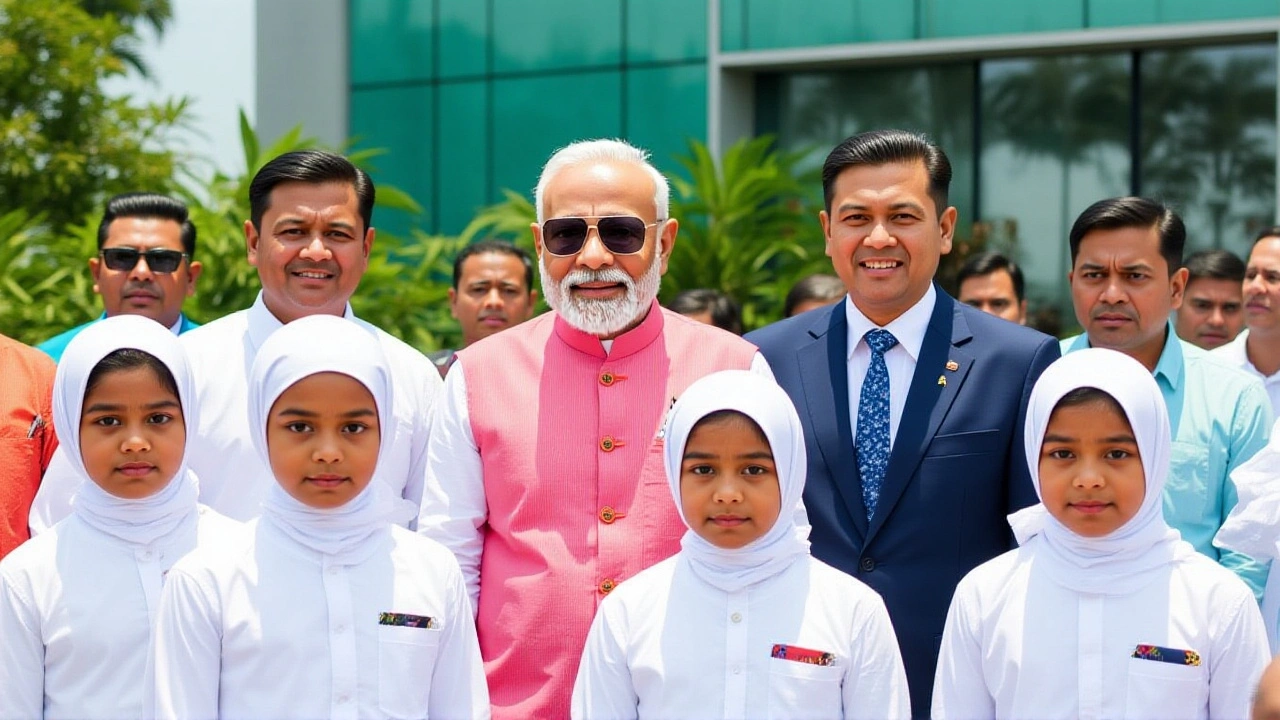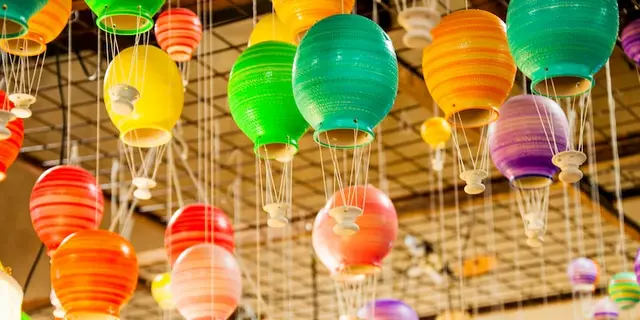
Modi’s Maldives Visit Seals Historic Reset with $582M Aid and Digital Pact
When Narendra Modi stepped off the plane in Malé on July 25, 2025, the air wasn’t just humid—it was charged with the weight of a geopolitical turnaround. The President of the Maldives, Mohamed Muizzu, along with his entire cabinet, greeted him at the airport—not a routine courtesy, but a deliberate signal: India was back, and not as a distant neighbor, but as a lifeline. This visit, timed to mark the 60th anniversary of both Maldivian independence and India-Maldives diplomatic ties, wasn’t just ceremonial. It was the formal closure of a painful chapter and the opening of something far more strategic.
A Reversal of Fortunes
Just a year ago, Muizzu’s government had loudly pushed the "India Out" campaign, accusing New Delhi of overreach and demanding the withdrawal of Indian military personnel. That posture, fueled by a flirtation with Beijing, left Maldives isolated as its economy teetered. Debt payments ballooned. Infrastructure projects stalled. Chinese loans, once hailed as the answer, came with strings—and delays. By early 2025, Maldives was running out of options. Then, in June 2024, Muizzu showed up at Modi’s swearing-in in New Delhi. A quiet gesture. But it spoke volumes. By October, the two leaders signed the Comprehensive Economic and Maritime Security Partnership. Now, on this July visit, that partnership was no longer a document—it was a living agreement, being implemented.
The Numbers That Changed Everything
The economic lifeline was undeniable. India announced ₹4,850 crore (approximately $582 million) in new financial support. But the real shocker? A 40% reduction in Maldives’ annual debt servicing burden—from $51 million to just $29 million. That’s not charity. It’s a reset. India had already extended $50 million in earlier loans and set up a $400 million currency swap line with the Maldivian Rufiyaa. Add to that the $30 billion in local currency exchange mechanisms already in place, and you’re looking at a financial architecture designed to stabilize a nation on the brink.
"We don’t just write checks," said one senior Indian official on condition of anonymity. "We build systems that outlast political cycles."
Digital Bridges Over Water
Here’s where the real innovation lies. India didn’t just offer cash. It offered connectivity. The two nations agreed to fast-track adoption of UPI and RuPay in Maldives’ tourism and retail sectors. Hotels, dive shops, and even local fish markets will soon accept Indian digital payments. Maldivians will be able to use RuPay cards abroad—and Indians, for the first time, can pay in rupees directly in Malé. It’s not just convenience. It’s economic sovereignty. By bypassing the dollar, both countries reduce exposure to global currency volatility.
And it’s working. In 2023 alone, over 209,000 Indian tourists visited Maldives—more than any other nationality. With visa-free entry since February 2022, that number is expected to hit 300,000 this year. "We’re not just selling beaches," said a Maldivian hotelier in Hulhumalé. "We’re selling trust. And India is the only country that’s shown up when we needed them most."

History Isn’t Just Memory—It’s Policy
Recall 1988. When a coup attempt threatened Maldives’ democracy, it was Indian paratroopers who flew in within hours—Operation Cactus. They didn’t stay. They didn’t claim territory. They restored order and left. That moment forged a quiet, enduring loyalty. Now, decades later, that legacy is being activated. Muizzu publicly praised India’s "immediate response in times of crisis." Modi, in turn, invoked India’s "Neighbourhood First" and "Vision Sagar" doctrines. But this time, it’s not rhetoric. It’s a balance sheet.
What Comes Next
Both sides are now pushing for a Free Trade Agreement (FTA) and a Bilateral Investment Treaty (BIT). Talks are expected to conclude by early 2026. India also offered technical support for renewable energy projects—solar microgrids for remote islands—and climate resilience training, given Maldives’ existential threat from rising seas. Joint maritime surveillance patrols are being planned, with Indian Coast Guard vessels likely to dock in Malé for joint exercises.
China, meanwhile, remains silent. Its Belt and Road projects—once the centerpiece of Maldivian foreign policy—have stalled due to payment disputes and lack of follow-through. No new loans. No high-profile visits. The message is clear: when you choose convenience over credibility, you pay the price.

Why This Matters Beyond the Indian Ocean
This isn’t just about two islands. It’s a test case for the Global South. Can a small nation navigate between giants without becoming a pawn? Maldives chose not to pick sides—it chose reliability. India didn’t exploit weakness. It offered partnership on Maldives’ terms. That’s a new model. One that could echo from Sri Lanka to Seychelles.
Frequently Asked Questions
How will the UPI and RuPay integration affect everyday Maldivians?
Maldivians will soon be able to use UPI for everything from paying for ferry tickets to buying groceries in local markets, with instant settlements in rupees or Rufiyaa. Over 1,200 businesses in tourist hubs like Maafushi and Baa Atoll have already signed up for RuPay terminals. This cuts transaction fees by up to 60% compared to Visa or Mastercard, and removes dependency on volatile dollar exchange rates.
Why did Maldives shift from "India Out" to "India First"?
After Chinese loans stalled and infrastructure projects halted due to unpaid dues, Maldives faced a fiscal crisis with debt servicing consuming 32% of its annual revenue. With no alternative funding, Muizzu’s government realized India’s support was not conditional on political alignment—but on mutual survival. The shift wasn’t ideological; it was economic necessity.
What’s the significance of the $582 million aid package?
This isn’t a grant—it’s a structured debt restructuring. The $582 million includes $4,850 crore in new lines of credit, but crucially, it reduces Maldives’ annual debt payments by $22 million. That frees up billions of Rufiyaa for healthcare, education, and climate adaptation. It’s the largest single financial package India has offered a South Asian neighbor since the 2015 Nepal earthquake relief.
How does this impact India’s strategic position in the Indian Ocean?
Maldives controls key shipping lanes between the Arabian Sea and the Bay of Bengal. Securing its alignment counters China’s growing presence in the Chagos Archipelago and Sri Lankan ports. With joint maritime patrols and digital infrastructure, India now has real-time situational awareness across a critical 1,200-kilometer arc. This turns Maldives from a diplomatic liability into a strategic asset.
Could this model be replicated with other island nations?
Absolutely. Sri Lanka, Seychelles, and Mauritius are watching closely. India’s approach—offering debt relief tied to digital inclusion, renewable energy, and local currency systems—avoids the debt-trap narrative. It’s not about influence. It’s about interdependence. If successful, this could become India’s blueprint for engagement across the Indian Ocean Rim.
What’s the timeline for the proposed Free Trade Agreement (FTA)?
Technical negotiations are underway and expected to conclude by March 2026. The FTA will eliminate tariffs on 90% of Maldivian exports to India—primarily fish, coconut products, and handicrafts—while opening India’s IT and pharmaceutical sectors to Maldivian investors. A pilot phase will launch in October 2025 with duty-free access for 50 key Maldivian products.

Caspian Harrington
Hi there! My name is Caspian Harrington and I'm a blogger who specializes in entertainment, fashion, and beauty. I have a passion for writing about films, especially those that intertwine style and artistry in unique ways. With a keen eye for detail, I enjoy analyzing movie costume design and exploring the influence of fashion on the big screen. Join me as I dive into the cinematic world and share my thoughts on everything from classic films to the latest blockbusters.
About
Welcome to Filmy Haven India, your ultimate destination for the latest in Indian cinema, reviews, and entertainment news. Immerse yourself in the world of Bollywood, Tollywood, and more, as we bring you exclusive content, interviews, and updates on your favorite stars and movies. Join our vibrant community of passionate film buffs and celebrate the magic of Indian cinema with Filmy Haven India.

